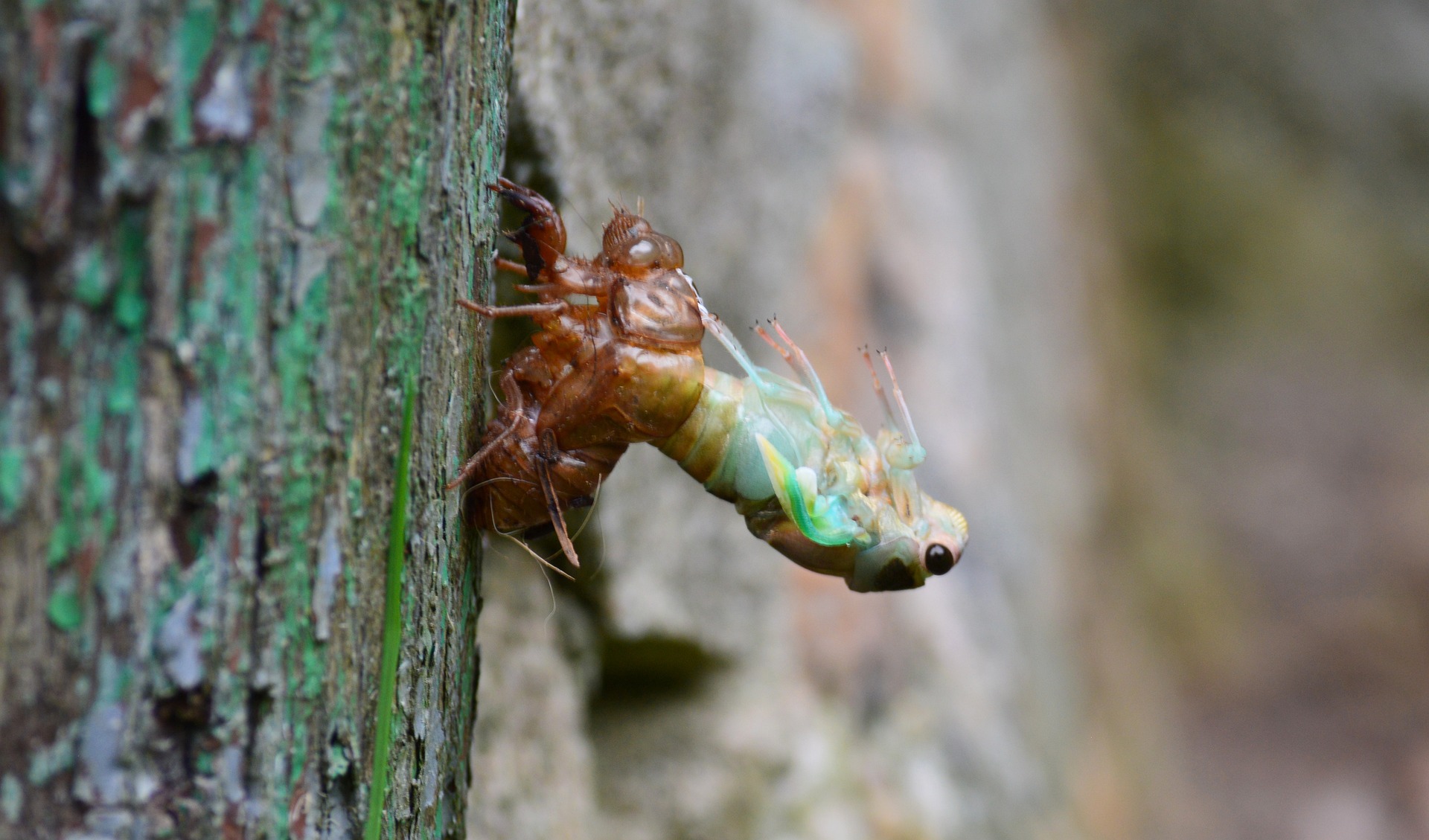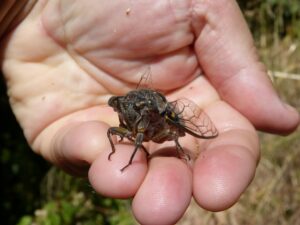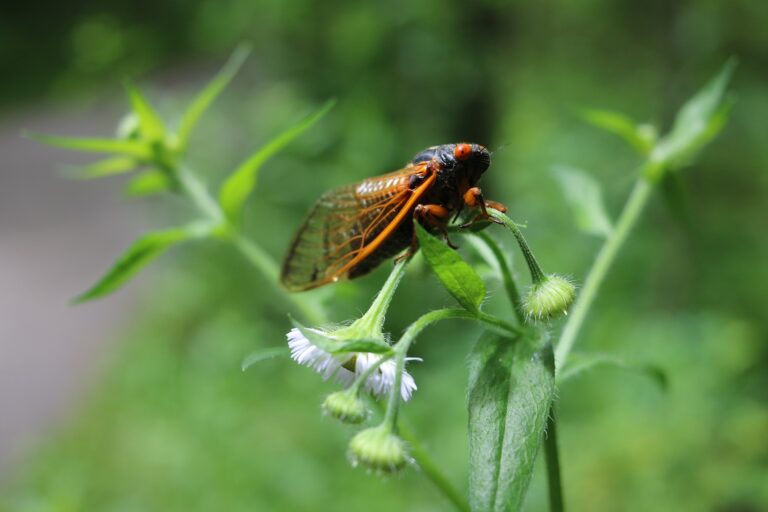The emerging periodical cicadas in Missouri have imitators. Some look normal on the surface, but their mating behavior aims to spread fungus spores instead of reproduction.
The Perpetrator, Massospora cicadina
The suspect, Massospora cicadina, infects cicadas, takes control of their bodies and changes their mating habits in order to multiply itself. This specific fungal pathogen acts on periodical cicadas primarily and now located south of St. Louis, as confirmed by experts.
“A week after a cicada emerges its abdomen disintegrates,” mentioned Chris Hartley, the senior individual at Sophia M. Sachs Butterfly House based in Chesterfield. “What is revealed is the white mass of growing fungus inside which sheds more spores ensuring continuity for fungus.”
How Cicadas Get Infected
Cicada nymphs get infected by this fungus while they’re still underground. The infection grows slowly and occupies the back portion of their bodies within a fortnight after emergence. They then transfer this infection to healthy mates thereby spreading it further.
“Cicada adult’s primary aim is reproduction,” says Hartley “Even though these infected ones spread fungus they are still keen on mating.”
Behavioral Alterations
Hallmark changes are seen in sexual behaviors among infected cicadas which aim at maximizing potential mating opportunities. Normal male cicada emits drone sounds during mating and females reciprocate this by flicking wings to accept mates but with infection all this change radically. It was observed that infected males started mimicking females by flicking wings voluntarily accepting mounting from others thus stressing on how fungal infection can modify cicada’s gender roles and mating norms to increase its spread.
“Spores of fungus wait patiently for 13 or 17 years in sync with cicada cycle before they emerge back,” states Hartley.
‘Zombie Cicadas’ Ruled by Mind-altering Fungus
Adding to the oddities already present, some cicadas are being harshly taken over by a fungal parasite that modifies their mind and forces them into infecting others. These so-called “zombie cicadas” get infected by Massospora, a psychedelic strain of fungus carrying hallucinogenic mushroom like stuff, underlined in a latest study by PLOS Pathogens.
Post infection, the host displays horrifying physical changes according to West Virginia University press release. Massospora initially feeds off on cicada’s genitalia, abdomen which gets replaced later by the fungal spores intended for further infections. After this phase the newly formed fungal abdomen starts erasing slowly “like a pencil’s eraser,” as stated by Brian Lovett one of the study authors.
Science behind Horror
The infected ones found in West Virginia are third set of findings from university researchers, mentioning infection caused by Massospora on cicada populations according to Matthew Kasson who co-authored this study.
Tackling how this pathogen infects these species is challenging since these insects live mostly underground resurfacing only once every 13 or 17 years
How Cicadas Are Deceived by the Fungus
Cicadas keep moving around even when almost one-third of their bodies are replaced with fungi as it controls their actions keeping them alive and not killing them for spreading maximum spores.
“Humans would be debilitated if our organs are significantly damaged but these infected cicadas even without one-third of their bodies continue unaffected engaging in standard activities such as mating and flying” cites Kasson.
Hypersexual Behavior
The new study points out extreme increase in sexual behavior due to infection. Infected cicadas cannot mate once replaced with fungal plugs, yet they attempt it ensuring fungus spread to healthy mates.
The manipulative fungi use males also by influencing them to flick wings like females inviting mates, this way potential male victims also get infected ensuring its rapid spread.
Fungus Spreading Through Contact
While transmission through sex appears more common there are other means of infection as well for the cicada, according to researchers.
“They spread spores even when they move around or walk on branches,” highlights Kasson. “We refer them as airborne saltshakers of death similar to how salt would pour out from an inverted shaker.”
Odd Massospora Fungus
This spring, trillions of cicadas after more than a decade beneath ground will rise up, make lot of noise while ascending trees their aim to attract opposite sex. Some though won’t be successful at reproduction rather they end up spreading a peculiar kind of fungi that occupies and operates these insects’ bodies and controls behavior.
How Cicadas Are Manipulated by Massospora cicadina
Infection starts when spores enter within the body. After this stage, insects completely lose control over themselves including the falling off of their back ends including genitalia states Dr. Matt Kasson. Exposing in place white fungal plug which is basically lump of spores burst out from the gap left by former genitals and abdomen, Doctor adds.
Despite having a chalky gumdrop of spores instead of genitals, the infected cicadas still attempt to mate with gusto. The fungus manipulates the cicadas’ behavior, causing what researchers including Kasson refer to as hyper sexualization. The infected males keep trying to mate with females, and they also change their behavior to attract their fellow males. Healthy female cicadas will flick their wings to indicate that they’re ready to mate. Both male and female cicadas infected with Massospora flick their wings to draw in amorous, soon-to-be-infected males.
Conclusion
The appearance of Massospora cicadina-infected cicadas in Missouri and other regions highlights the intricate and often bizarre interactions in nature. These “zombie cicadas” serve as a reminder of the complexity of ecosystems and the incredible adaptations of life forms in their struggle for survival. As researchers continue to study this phenomenon, we gain deeper insights into the fascinating world of periodical cicadas and the unique challenges they face.










+ There are no comments
Add yours